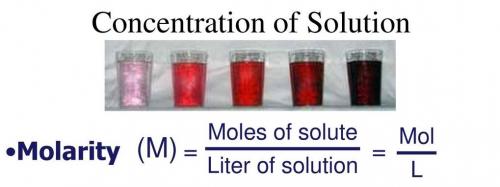 3
3 Explanation:
Answer :
Reaction 1 : Add Zinc to Copper Sulfate.
Observations of Reactants : Zinc is in solid state and copper sulfate in aqueous state.
Predicted Type(s) of Reaction : Single-displacement reaction
Observations of Products : Copper is in solid state and zinc sulfate in aqueous state.
The balanced chemical reaction :
Types of reaction : Single-displacement reaction : It is a type of reaction in which a single element displaces another element in a compound.
Reaction 2 : Mix Potassium Iodide and Lead (II) Nitrate.
Observations of Reactants : Potassium iodide is in solid state and lead nitrate in aqueous state.
Predicted Type(s) of Reaction : Double-displacement reaction
Observations of Products : Lead iodide is in solid state and potassium nitrate in aqueous state.
The balanced chemical reaction :
Types of reaction : Double-displacement reaction : It is a type of reaction in which two reactants exchange their ions to form two new compounds.
Reaction 3 : Burn Copper Wire.
Observations of Reactants : Copper is in solid state and oxygen in gas state.
Predicted Type(s) of Reaction : Oxidation reaction
Observations of Products : Copper oxide is in solid state.
The balanced chemical reaction :
Types of reaction : Oxidation reaction : In a oxidation reaction, a substance gains oxygen.
Reaction 4 : Heat Sodium Carbonate.
Observations of Reactants : Sodium carbonate is in solid state.
Predicted Type(s) of Reaction : Thermal decomposition reaction
Observations of Products : Sodium oxide is in solid state and carbon dioxide in gas state.
The balanced chemical reaction :
Types of reaction : Thermal decomposition reaction : It is defined as the breaking down of a chemical compound due to heating.

Answer:
AStep-by-step explanation:
The input force is 50 N. But it will not create not any change. No mechanical advantage is observed.
glycoproteins
Explanation:
A positive reaction for Molisch's test is given by almost all carbohydrates (exceptions include tetroses & trioses). It can be noted that even some glycoproteins and nucleic acids give positive results for this test (since they tend to undergo hydrolysis when exposed to strong mineral acids and form monosaccharides).
Answer:
Taking into accoun the ideal gas law, The volume of a container that contains 24.0 grams of N2 gas at 328K and 0.884 atm is 26.07 L.
An ideal gas is a theoretical gas that is considered to be composed of point particles that move randomly and do not interact with each other. Gases in general are ideal when they are at high temperatures and low pressures.
The pressure, P, the temperature, T, and the volume, V, of an ideal gas, are related by a simple formula called the ideal gas law:
P×V = n×R×T
where P is the gas pressure, V is the volume that occupies, T is its temperature, R is the ideal gas constant, and n is the number of moles of the gas. The universal constant of ideal gases R has the same value for all gaseous substances.
Explanation:
In this case, you know:
P= 0.884 atm
V= ?
n=  0.857 moles (where 28 g/mole is the molar mass of N₂, that is, the amount of mass that the substance contains in one mole.)
0.857 moles (where 28 g/mole is the molar mass of N₂, that is, the amount of mass that the substance contains in one mole.)
R=0.082
T= 328 K
Replacing in the ideal gas law:
0.884 atm×V= 0.857 moles× 0.082 ×328 K
×328 K
Solving:

V= 26.07 L
The volume of a container that contains 24.0 grams of N2 gas at 328K and 0.884 atm is 26.07 L.


It will provide an instant answer!
